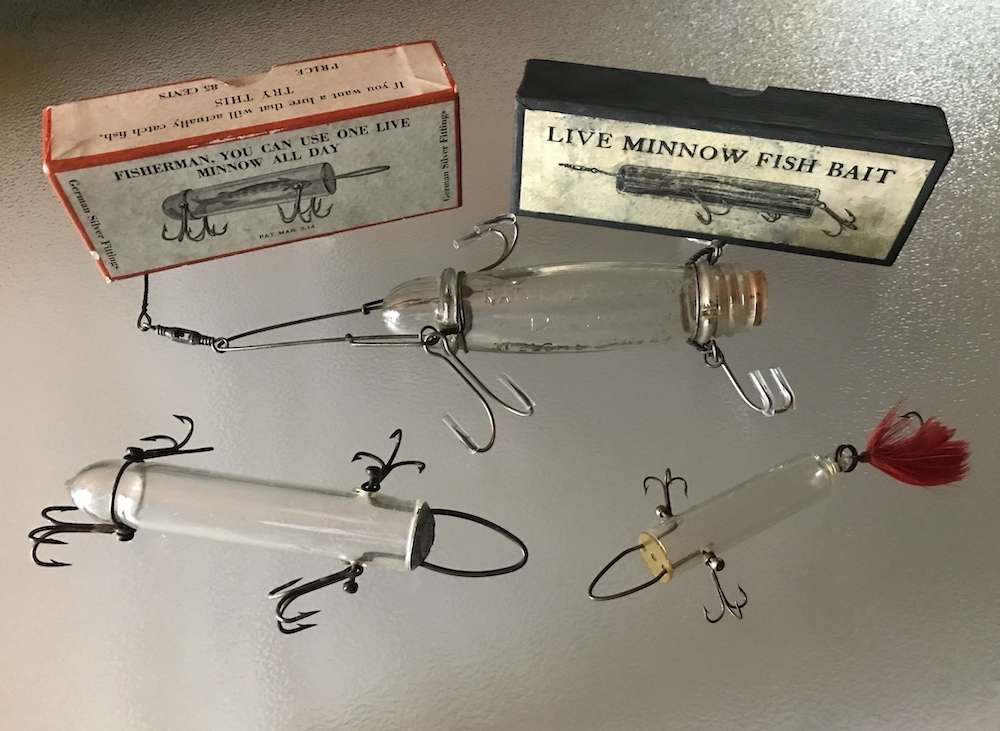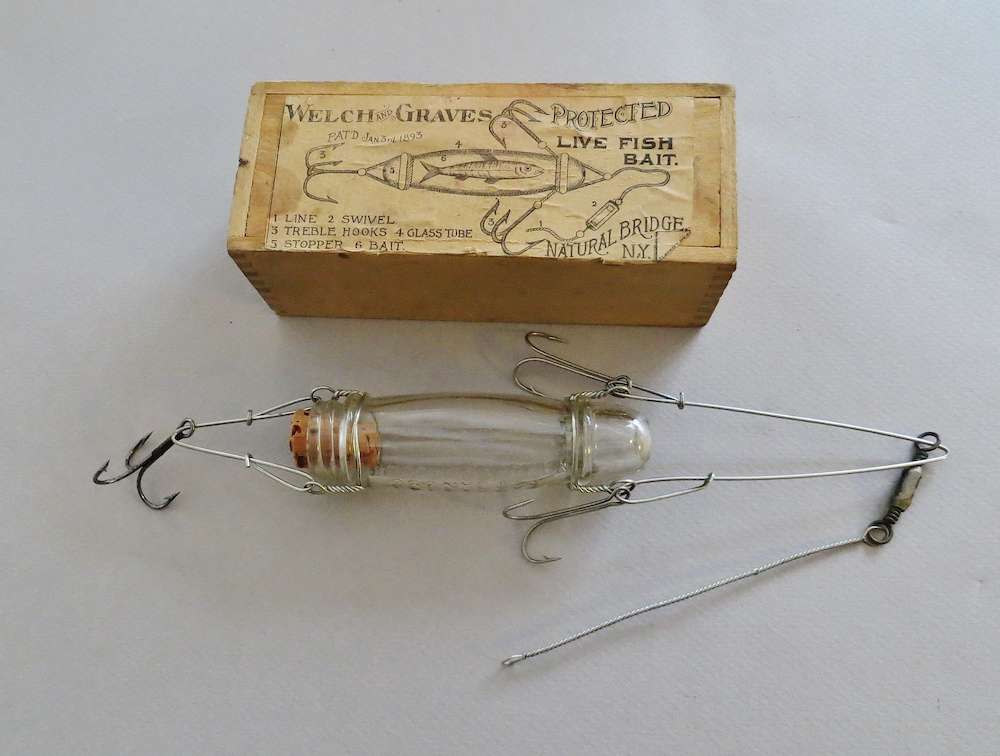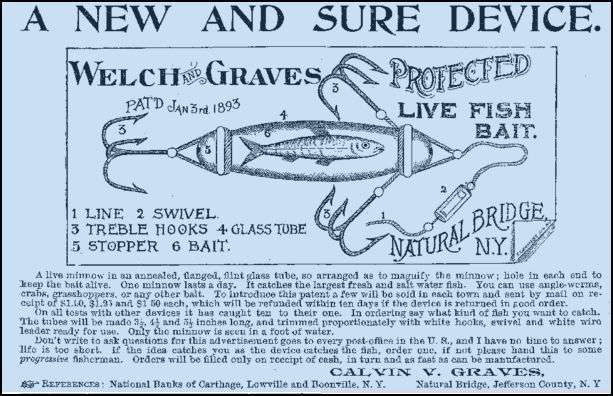
One of the strangest contraptions ever to fool a bass has to be the glass minnow tube. Yet, as odd as they are, they somehow etched their way into the history of American lure development.
The concept is simple: By inserting a live minnow inside a small glass cylinder filled with water, an angler could use that same bait repeatedly. In fact, some manufacturers claimed their tubes would “keep a minnow live all day.”
Back then, you didn’t purchase live bait. You caught it yourself. Therefore, the idea of getting the most from each individual baitfish had strong appeal.
Another unique selling point was the curvature of the glass, which could actually magnify the baitfish — presumably making them more appealing to predator fish. At least, that was the claim of several prominent glass tube manufacturers.
Made in the U.S.A.
Welch & Graves of Natural Bridge, N.Y., is believed to be the first American manufacturer of a glass minnow tube. Henry J. Welch is credited with the design, while Calvin V. Graves was charged with their production. A patent was granted on Jan. 3, 1893.
Welch & Graves minnow tubes were offered in several sizes, but the 3 1/2-inch “bass size” was the most common.

While it’s possible these lures were used for certain casting applications, the patent refers to them as a “trolling apparatus.” They feature a hard wire harness that serves both as a leader form and hook hanger. Depending on the size, the configuration could include a rear hook harness from which single or tandem hooks would hang. Raised ridges in the glass were included to secure the wire forms.
Through the rear opening of the cylinder, small baitfish could be inserted — everything from bull minnows to shiners and threadfin shad … even crawfish. Although most configurations included a wire form to close off the opening, many examples found today feature a cork stopper. At the nose of the cylinder is a small hole through which water could pass — to keep the bait alive.
Others in the game
Following Welch & Graves were a number of other minnow tube manufacturers, and not all of them worked in glass. Some preferred celluloid — an early form of plastic.
Among the more prominent were Henning & Baldwin, Detroit Glass Minnow Tube Company, Pfeiffer Live Bait Holder Company and Wilton Manufacturing Company. Original examples by any of these makers are considered highly collectible and can command serious dollars … especially when accompanied by an original box and paperwork.

Some of these makers took a different approach in their designs. Instead of accessing the cylinder through the rear, the minnow was inserted at the front and a sliding celluloid or aluminum disc closed off the opening. These small caps usually featured vents through which water could enter the cylinder, and then exit via holes in the side of the glass where the hook hangers are positioned. This design was less gangly and likely more suited for casting applications.
As time passed, molded plastic gradually displaced glass. Cheaper materials and a more streamlined production took over. But the appeal of glasswork hasn’t been entirely forsaken. There are still artisans today who create their own unique tubes. Many are works of art and can cost the same as a collectible tube that’s more than 100 years old.
Although it’s unclear how effective these bait-holding contraptions were at fooling fish, they have certainly experienced a long production run. At the very least, they fooled fishermen.
To learn more on the subject, check out Richie & Kim Breault’s book, The Glass Minnow Tube & Bait Holder Collector’s Guide. It’s available through Whitefish Press.

